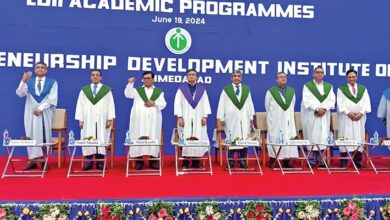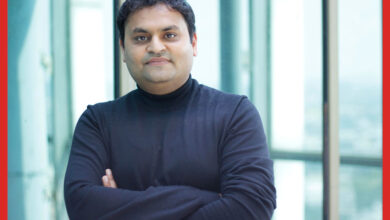Banning Non-Competes: Great News For Spinout Entrepreneurs

In late April 2024, the Federal Trade Commission (FTC) made an historic decision when it passed a rule to ban non-compete clauses for all workers in U.S. industries, with a small exception for senior executives. Far from hurting business, the new ban makes everyone a winner, employees and businesses alike, by opening the door to innovation, higher wages, and market growth. Based on research for our new book SPINOUT VENTURES, the biggest winners of all may be spinout entrepreneurs.
Spinout ventures
Spinout ventures are start-up businesses created by entrepreneurs who are ex-employees of incumbent organizations. They perform better than other types of startups because of inherited knowledge, networks, and capabilities from their parent companies. Non-competes have often had stifling impact on spinouts and employee mobility.
Non-competes and the myth of entrepreneurship
Despite the popular legend that many successful entrepreneurs are college dropouts that start their ventures in their garage from spare parts, most entrepreneurs have previously worked for other businesses absorbing important lessons and skills about how to do business along the way.
Unlike intrapreneurs, who are content to work on ventures internal to their current employers, spinout founders create new startups that are independent of their employers. Also, unlike corporate spinoffs, where an existing business unit is transformed into an independent company by managerial fiat, spinouts tend to be started by small teams and individuals that leave their employment. For example, although Zoom attracted over 40 employees from Cisco in its early years, they didn’t leave en masse but rather in dribs and drabs after the founder exited due to a strategic disagreement with Cisco executives about funding priorities.
Unlike mythical garage and dorm room entrepreneurship, where self-made individuals build something from nothing, spinouts benefit from the fertile learning environment that their founders and early employees were exposed to in previous employment. Partly because of the work routines and networks they transfer with them, spinouts tend to scale faster and survive longer than other types of startups.
The late Professor Steven Klepper’s research legacy explains how the spinout mechanism led to the success of clusters like those Silicon Valley. California was quick off the mark to ban non-competes, recognizing that spinout founders typically want to remain close to their parent firms to be able to leverage their stakeholder network and also do not want to move away from friends and family. These preferences lead to an agglomeration of firms in a particular geographic area and to synergies among the firms with similar origins. For instance, Intel and AMD spun out of Fairchild, which itself spun out of Shockley, all of which were founded in the valley.
Benefits for parent organizations not just for spinout entrepreneurs
Considerable critical media attention on the FTC ban is about the potential downside for employers, who suggest this may weaken their competitiveness or undermine their company’s stock prices. However, this narrow line of thinking misses the other side of the equation, which is the potential upside for employees whose ambition is to leave employment to start a new company.
Spinouts are not only good for the economy as they promote clusters, but they can be beneficial for parent companies as well. Single organizations tend to have limited resources with which to exploit all of the innovations they generate internally. As a result, many of the innovations or ideas percolating in a given company end up being exploited by someone else.
Encouraging employees to take peripheral opportunities outside the existing company’s boundaries and forming a separate company can improve corporate coherence, strategic alignment and focus the core business. In many cases, the spinout becomes a licensee, new customer or supplier of the parent. And some spinouts will create new knowledge which can spill back to the parent. Spinouts can become ideal targets for later acquisition that are easier to integrate because of their transferred routines and knowledge.
Companies can choose to nurture a reputation for innovation and attracting many great employees, some of whom may do spinouts, but most of whom will likely remain as valuable core assets of the business. Or, do they want a corporate culture imbued with the chilling effect of a litigious employer that chases former employees?
Examples like Nokia, AstraZeneca and Palantir, which are parent organizations to many spinout ventures, suggest that it is a good business strategy to be seen as a leading incubator of innovation and new business development.
Just as studies of jurisdictions that soured on bans show, we can expect boom times for spinout ventures that compete with their former parent organizations. However, eliminating non-competes is no panacea because other restrictions like non-solicitation (no poach) and non-disclosure agreements remain enforceable. These restrictive covenants will provide legal tools to parent firms to keep valuable resources (e.g., customers, employees, and proprietary information) from walking out the door.
Written by Dr. André Laplume.
Have you read?
Alexandre de Vigan: Nfinite aims to become the global leader in synthetic image creation.
Why improving soft skills is key to leadership success.
Why emotional fitness is a vital leadership skill.
My Misconceptions About Earning Career Success And How I Eventually Got it Right.
Hard-Earned Leadership Lessons from 35 Years on the Razor’s Edge.
Add CEOWORLD magazine to your Google News feed.
Follow CEOWORLD magazine headlines on: Google News, LinkedIn, Twitter, and Facebook.
This report/news/ranking/statistics has been prepared only for general guidance on matters of interest and does not constitute professional advice. You should not act upon the information contained in this publication without obtaining specific professional advice. No representation or warranty (express or implied) is given as to the accuracy or completeness of the information contained in this publication, and, to the extent permitted by law, CEOWORLD magazine does not accept or assume any liability, responsibility or duty of care for any consequences of you or anyone
else acting, or refraining to act, in reliance on the information contained in this publication or for any decision based on it.
Copyright 2024 The CEOWORLD magazine. All rights reserved. This material (and any extract from it) must not be copied, redistributed or placed on any website, without CEOWORLD magazine’ prior written consent. For media queries, please contact: info@ceoworld.biz
SUBSCRIBE NEWSLETTER



